This post is not a deep dive, and it's not even much technical. We'll focus on VMware terminology. It' is just a quick post for folks unsure about the differences between the base VMware products. Almost anyone knows ESXi, but the difference between vSphere and vCenter? People are often confused and unsure, but those answers are rather simple. Let's get through this to clear any doubts. This post will teach you What is The Difference between VMware vSphere, ESXi and vCenter.
Launched in 2001, VMware ESX (formerly known as VMware ESX Server) has started the virtual revolution. Today, VMware is a leading data center virtualization company (now part of Dell). Every year and a half there is usually a full release of new software which adds new features and also assures compatibility for new hardware, such as NVMe SSDs, very large Hard disk drives or latest Intel or AMD CPUs.
VMware ESXi
ESXi is the hypervisor. It is the piece of software (very tiny) which installs on a single physical server (host) and allows to run several different operating systems OS) to run side-by-side. Those OS are completely separated one from another but can communicate via a network with the rest of the world, with the rest of the computers running on Local Area Network (LAN). Operating systems are running on virtual machines (VMs) where each VM has virtual hardware (CPU, Memory, Disk).
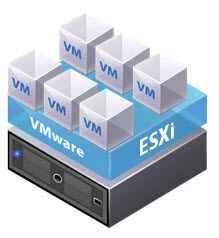
The usage of ESXi Free is obvious. Learning, testing workflows, small DR tests, validating architectural decisions. By using snapshots, you can also validate windows patches. Example, you might want to create an isolated clone of your production server by using VMware Converter and P2V technology, and you want to test a big Microsoft service pack before rolling it directly into the production environment, and possibly causing a downtime.
Tips:
- What is VMware vSphere Hypervisor?
- Three Ways to Enable ESXi Shell and Timeout
- How to reset ESXi 6.x root password and under which conditions
- How To Reset ESXi Root Password via Microsoft AD
VMware vCenter
VMware vCenter server is a central piece of software which allows central management of the whole infrastructure. From a single console, you can do pretty much everything. vCenter server can be installed on Windows, but also deployed as a virtual appliance (pre-configured VM) with a Photon OS (Linux) which is a very fast booting Linux distribution.
This swap to the Photon OS is quite recent, where VMware used Suse Linux Enterprise Server (SUSE).
vCenter Server is a licensed piece of software. There are two options to buy vCenter server:
- vCenter Server Essentials – As a part of vSphere Essentials, Essentials Plus bundle. This version of the vCenter server (also called vCenter Server Essentials) is good to manage up to 3 hosts with up to 2 physical CPU each. If you're a small customer, you can imagine running comfortably about 60 VMs, then this solution might be well suited. With the “essentials” kit you got not only vCenter server license but also licenses for ESXi (3 hosts with up to 2CPU each).
- Standalone vCenter Server – The full-blown vCenter server, which can manage up to 2000 hosts with up to 25000 powered ON VMs. This is vCenter server license only. Shop for Different vCenter server editions here. vCenter itself is just one part of the licensing puzzle. You need to have a license for each of your connected ESXi hosts in order to manage them from a single central location. Those licensing has basically 3 different flavors (standard, enterprise, enterprise Plus) and it counts per physical CPU. So if you're planning to have a host with 2 physical CPU, you'll need to have 2 licenses just for that particular host.
Tech Tips:
- How to deploy VMware VCSA 6.5 (VMware vCenter Server Appliance)
- How to unlock the VMware VCSA root password?
- What is VMware Cluster?
- How to Configure VMware High Availability (HA) Cluster
VMware vSphere
VMware vSphere is a commercial name for the whole VMware Suite. As I mentioned, the pricing differs, but one of the lower costs bundles are vSphere Essentials or Essentials Plus. The difference between those two? There are. Everything is in the packaging and features, not the actual software.
Depending on the licensing you apply, the infrastructure “unlocks” more features accessible via the vSphere Web client. Note that there is also vSphere HTML 5 client, but its functions are for now, limited. VMware continues its development.
Here is the View from the VMware vSphere console after connection to the vCenter server.
Differences between Essentials and Essentials PLUS below. As you can see Essentials does not have High Availability (automatic VM restart), vMotion, backup software (VDP) or possibility to add VSAN as shared storage option (separate licensing option – per physical CPU).
The Essentials is good for very small clients and clients who do not really need availability. Clients which can afford to stay “offline” for a day while doing hardware maintenance. On the other hand, having the possibility to migrate your VMs to another host and do host maintenance or patching, without interruption, gives you a real advantage. This can be done during business hours and users can continue to work.
Also if there is an unplanned hardware failure, vSphere High Availability (HA) can restart automatically those VMw which failed when the host failed. Those VMs are automatically restarted on other hosts which are part of VMware cluster. There is small downtime during which the system figures out what the host has failed and which are the hosts that are able to start the failed VMs. Those hosts must have enough available capacity in terms of memory or CPU. Once this automatic decision is taken, the VM boots up. The whole process is completely automatic and acts without the admin's intervention.
vSphere Tips:
Shop for vSphere licenses at VMware Store:
- vSphere Essentials Term (time limited) | vSphere Essentials
- vSphere Essentials Plus Term (time limited) | vSphere Essentials Plus
Wrap up:
As you can see, the VMware terminology is not so complicated and the difference between ESXi, vSphere or vCenter are not that hard to learn. We have also some deep dives and how-to articles which are part of the vSphere 6.5 (or vSphere 6.0 page, if you're still on vSphere 6.0). VMware licensing is quite coherent. While the hypervisor itself is free, with limited functions, it's clearly difficult to put such a host into a production environment without taking a risk of a data loss. The Free ESXi is meant to be used for testing environments only.
Only with a reliable and solid backup solution which allows to backup running VMs, it is possible to move workloads into production and say that at any time you can restore if anything goes wrong. the malware and crypto locker was never more active than today and it is not only targeting individuals but also enterprises. What to do when all your data are encrypted by some crypto-ransomware? The only way, without paying the ransom, is to restore from the backup location. That's why is important to backup, but also to copy the backed up data to a secondary location.
Use VMware Learning credits to purchase VMware Exam Vouchers. (VCA, VCP, VCAP/VCIX), so the learning credits are kind of universal as you can buy exam vouchers, training classes, or even professional services.
*******************************************
VCA | VCP | VCAP or VCIX exam vouchers
*******************************************
VMware Certification Program vouchers are valid for 12 months from the month purchased.VMware Voucher Terms & Conditions:
Note: VMware Professional Services Credits and Learning Credits may be redeemed to purchase certification exam vouchers. Vouchers are redeemed through third-party testing provider, Pearson VUE.
Check VMware learning credits at VMware.
Make sure to check our vSphere 6.7 page and some other links below.
More posts from ESX Virtualization:
- VMware vCSA 6.7 Appliance Backup Setup and Schedule
- What is a vSphere 6.7 Topology and Upgrade Planning Tool?
- How VMware HA Works?
- Free Tools
- TOP 5 Backup Software for VMware Infrastructure
- Upgrade Windows Server 2012R2 AD to Server 2016
Stay tuned through RSS, and social media channels (Twitter, FB, YouTube)

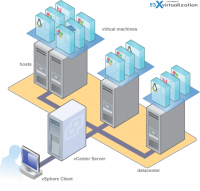
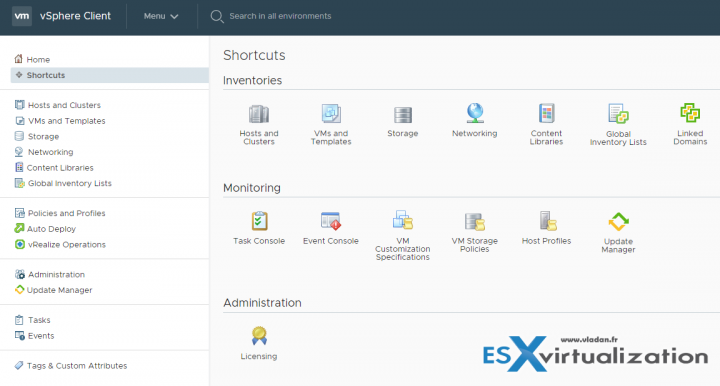
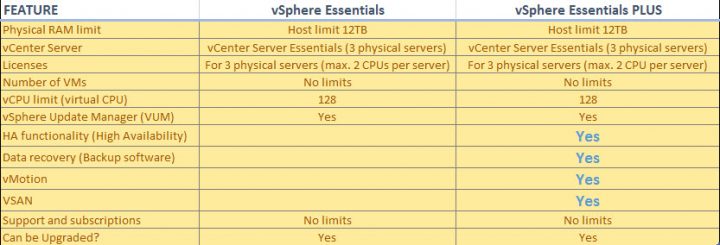
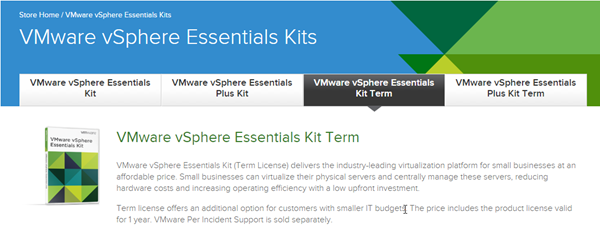
Great job! Keep It Simple
Thanks. Clear explanation. I only have a question about the payments.
Esxi is perpetuel. What about vcenter or lets say vsphere? Can I buy it once and it will stay forever just like esxi?
Yes, those licenses are perpetual. With one exception, for Essentials term and Essentials plus term licensing, which are limited in time (12 months).
Dear Vladan,
Please help me,
I have 2 licenses for 1 CPU, how to assign the 2 licenses for 1 cpu to 1 asset? because my server have 2 cpu.
Many thanks,
Le Ngoc Thanh
vSphere Web client > Home > Licensing > Manage your licenses > Assets TAB > Hosts TAB > All Actions > Assign License….
THANK YOU for the breakdown! VMware n00b!